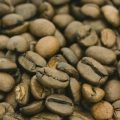What is Cold Brew Coffee?
Cold brew coffee has taken the U.S. by storm in recent years, popping up everywhere from local coffee shops to major grocery stores. But what exactly is cold brew? Simply put, cold brew is a coffee-making method where ground coffee is steeped in cold water for an extended period—usually 12 to 24 hours. This slow extraction process results in a smooth, mellow flavor profile thats less acidic and less bitter than traditional hot-brewed coffee.
Its important not to confuse cold brew with iced coffee. While both are served cold, iced coffee is made by brewing hot coffee and then chilling it over ice. Cold brew, on the other hand, never comes into contact with hot water, which gives it its unique taste and smoothness. This difference makes cold brew especially appealing during hot American summers when people crave something refreshing but still want that caffeine kick.
The popularity of cold brew in the U.S. can be credited to its versatility and taste. Many people enjoy drinking it straight, but its also perfect for customizing with milk, sweeteners, or flavored syrups. Whether youre grabbing a bottle at the store or making your own at home, cold brew offers a trendy, delicious alternative to regular iced coffee—making it a favorite for both casual drinkers and serious coffee enthusiasts alike.
Essential Equipment and Ingredients
If you’re just starting out with cold brew coffee at home, knowing what you need is the first step to brewing success. Unlike traditional hot coffee, cold brew requires a few specific tools and ingredients to get that smooth, rich flavor every time. Here’s a quick overview of the basics:
Coffee Beans: The Foundation of Great Cold Brew
Your choice of coffee beans makes all the difference. For cold brew, medium or dark roast beans are usually preferred because they bring out chocolatey, nutty, and bold flavors when brewed slowly in cold water. Always opt for whole beans and grind them just before brewing for maximum freshness.
Grinder: Go for Coarse
A good grinder is crucial. You’ll want a burr grinder so you can achieve a coarse grind—think sea salt texture—which helps prevent over-extraction and bitterness in your cold brew.
Brewing Tools: Simple and Effective
You don’t need fancy gear to make great cold brew. Here are some common options:
| Tool | Description | Where to Find |
|---|---|---|
| Mason Jar/French Press | Affordable, easy-to-use containers for steeping your coffee grounds in water. | Grocery stores, online retailers |
| Cold Brew Maker | Specialized pitchers or brewers with built-in filters designed for cold brew. | Coffee shops, online marketplaces |
| Fine Mesh Strainer/Cheesecloth | Used to filter out grounds after steeping if not using a dedicated brewer. | Kitchen supply stores |
Water: Don’t Overlook Quality
Cold brew is mostly water, so use filtered or bottled water if possible for a cleaner taste. Room temperature or cold water both work well for brewing.
Optional Add-ons
If you like to customize your drink, consider adding milk (dairy or plant-based), sweeteners (like simple syrup), or even flavored extracts such as vanilla after brewing.
With these essentials on hand, you’ll be ready to start making delicious cold brew at home—no barista experience required!
![]()
3. Simple Step-by-Step Brewing Guide
Making your first batch of cold brew coffee is easier than you might think. Here’s a beginner-friendly guide to help you get started, along with expert tips for the best flavor.
Step 1: Gather Your Supplies
You’ll need coarsely ground coffee, filtered water, a large jar or pitcher, and a fine-mesh strainer or cheesecloth. For the most authentic taste, use fresh, high-quality beans and grind them just before brewing.
Step 2: Measure the Perfect Ratio
A great starting point is a 1:4 coffee-to-water ratio. That means for every 1 cup of coarsely ground coffee, add 4 cups of cold, filtered water. This ratio creates a bold yet smooth concentrate that can be adjusted to your taste later on.
Step 3: Combine and Steep
Add the ground coffee to your jar or pitcher and pour in the water. Stir gently to make sure all grounds are saturated. Cover and let it steep in your refrigerator for 12 to 18 hours—overnight works great! The longer it steeps, the stronger the flavor.
Step 4: Strain and Serve
After steeping, strain the mixture using a fine-mesh strainer or cheesecloth into a clean container. Discard the used grounds. You now have cold brew concentrate! To serve, dilute with water, milk, or your favorite non-dairy alternative to your preferred strength. Start with equal parts concentrate and liquid, then adjust to taste.
Pro Tips for Best Flavor
- Use filtered water for a cleaner taste.
- Coarse grinds prevent over-extraction and bitterness.
- Experiment with different coffee beans for unique flavors.
- Store your cold brew concentrate in the fridge for up to one week.
Enjoy Your Homemade Cold Brew!
With these simple steps and tips, you’ll be sipping delicious cold brew like a pro in no time. Don’t be afraid to customize your drink—try adding flavored syrups, spices, or even a splash of cream for that perfect café-style treat right at home.
4. Customizing Your Cold Brew
One of the best things about cold brew coffee is how easy it is to make it your own. Whether you like it sweet, creamy, or with a twist of flavor, there are plenty of ways to tailor your cold brew to your personal preferences. Here’s how you can customize your drink just like they do at popular American coffee shops.
Sweeteners
If you prefer your cold brew on the sweeter side, there are several options to choose from. Simple syrup dissolves easily in cold liquids and is a staple in most U.S. cafés. You can also try honey, agave nectar, or flavored syrups for an extra kick.
| Sweetener | Flavor Profile |
|---|---|
| Simple Syrup | Classic, neutral sweetness |
| Honey | Rich, floral notes |
| Agave Nectar | Mildly sweet, plant-based |
| Vanilla Syrup | Smooth, dessert-like |
Dairy & Non-Dairy Add-Ins
Creamy cold brew is a big hit across America. You can go classic with half-and-half or whole milk, or opt for lighter options like skim or 2% milk. For those who are dairy-free, almond milk, oat milk, coconut milk, and soy milk are all popular choices that add unique flavors and textures.
| Add-In Type | Popular Options |
|---|---|
| Dairy | Whole Milk, Half-and-Half, Heavy Cream |
| Non-Dairy | Oat Milk, Almond Milk, Soy Milk, Coconut Milk |
Popular American Flavor Options
If you’re looking to spice up your cold brew the American way, try adding some classic flavors:
- Caramel: Add caramel syrup for a sweet and buttery taste.
- Pumpkin Spice: Especially popular in fall, this blend brings warm spices to your cup.
- Mocha: A splash of chocolate syrup makes your coffee taste like a treat.
- Cinnamon: Sprinkle ground cinnamon or use cinnamon syrup for a cozy touch.
Tips for Experimenting
- Start with small amounts of add-ins and adjust to taste.
- If using syrups or flavorings, stir well to ensure everything mixes evenly.
- Try combining flavors—like vanilla and caramel—for something truly unique.
The Bottom Line
Your perfect cold brew is just a few tweaks away. Experiment with different combinations until you find what suits your taste buds best—there’s no wrong way to enjoy cold brew coffee!
5. Storage, Serving, and Hacks
Once you’ve brewed your cold brew coffee, knowing how to store it properly is key to maintaining its flavor and freshness.
How to Store Cold Brew
Cold brew concentrate should always be kept in an airtight container in the fridge. Mason jars or glass pitchers with tight lids are popular choices across American households. Properly stored, cold brew can last up to two weeks, but for the freshest taste, aim to consume it within a week. Avoid adding milk or sweeteners until serving time—this helps extend shelf life and keeps flavors bold.
Creative Serving Ideas Loved in the States
Americans love to customize their cold brew! Serve over ice with a splash of oat milk or almond milk for a creamy twist, or add vanilla syrup for a hint of sweetness. For a dessert-inspired treat, top your cold brew with whipped cream and a sprinkle of cinnamon or cocoa powder. During summer BBQs or brunches, try serving cold brew as coffee “mocktails”—add tonic water and a slice of orange for a refreshing twist that’s trending in cafes from coast to coast.
Hacks for Maximizing Freshness and Convenience
If you want grab-and-go convenience, pour your cold brew into single-serve bottles or jars at the start of the week. To avoid dilution, make coffee ice cubes by freezing some of your brew; use these instead of regular ice when serving. If you’re always on the move, invest in an insulated tumbler to keep your cold brew chilled for hours. And if you’re sensitive to caffeine, remember you can dilute your concentrate with extra water or milk—tailor each cup just how you like it!
6. Troubleshooting and FAQs
Common Cold Brew Questions from American Beginners
Starting out with cold brew can come with a lot of questions, especially if you want to nail that smooth, flavorful taste at home. Here are answers to some of the most frequently asked questions by Americans new to making cold brew coffee.
Why does my cold brew taste weak or watery?
This is one of the most common concerns. The most likely reason is that your coffee-to-water ratio is off. For a strong concentrate, stick with about 1 cup of coarsely ground coffee to 4 cups of water. You can always dilute the concentrate with water or milk later to suit your preference.
Why is my cold brew too bitter?
If your cold brew tastes bitter, you might be steeping it for too long or using beans that are ground too finely. Stick with a coarser grind—similar to raw sugar—and aim for a steep time between 12-18 hours in the fridge. Over-extraction leads to bitterness.
How do I avoid gritty or muddy cold brew?
Muddiness usually means your filter isn’t fine enough or you’re using a grind that’s too fine. Use a good-quality coffee filter, cheesecloth, or even a nut milk bag after the initial brewing process to strain your cold brew for a clean finish.
How long does homemade cold brew last in the fridge?
Cold brew concentrate will stay fresh in an airtight container in the refrigerator for up to 7-10 days. If you notice any sour or off flavors, it’s time to make a new batch.
Pro Tips for Perfecting Your Homemade Cold Brew
Use Filtered Water
The quality of your water matters just as much as your beans. Using filtered water can help bring out the best flavors and avoid any funky aftertaste from tap water.
Try Different Beans
Experiment with different roasts and bean origins! Many Americans love medium or light roasts for cold brew, which highlight bright and sweet notes rather than heavy bitterness.
Add Flavors After Brewing
If you like flavored coffees (think vanilla, cinnamon, or chocolate), add syrups or spices after brewing rather than during extraction to keep the taste clean and not overpowering.
Still Have Questions?
If you’re still running into issues, don’t stress! Making great cold brew at home takes a little practice and experimentation. Try adjusting your ratios, grind size, and steep time until you find what works for your taste buds. Happy brewing!


